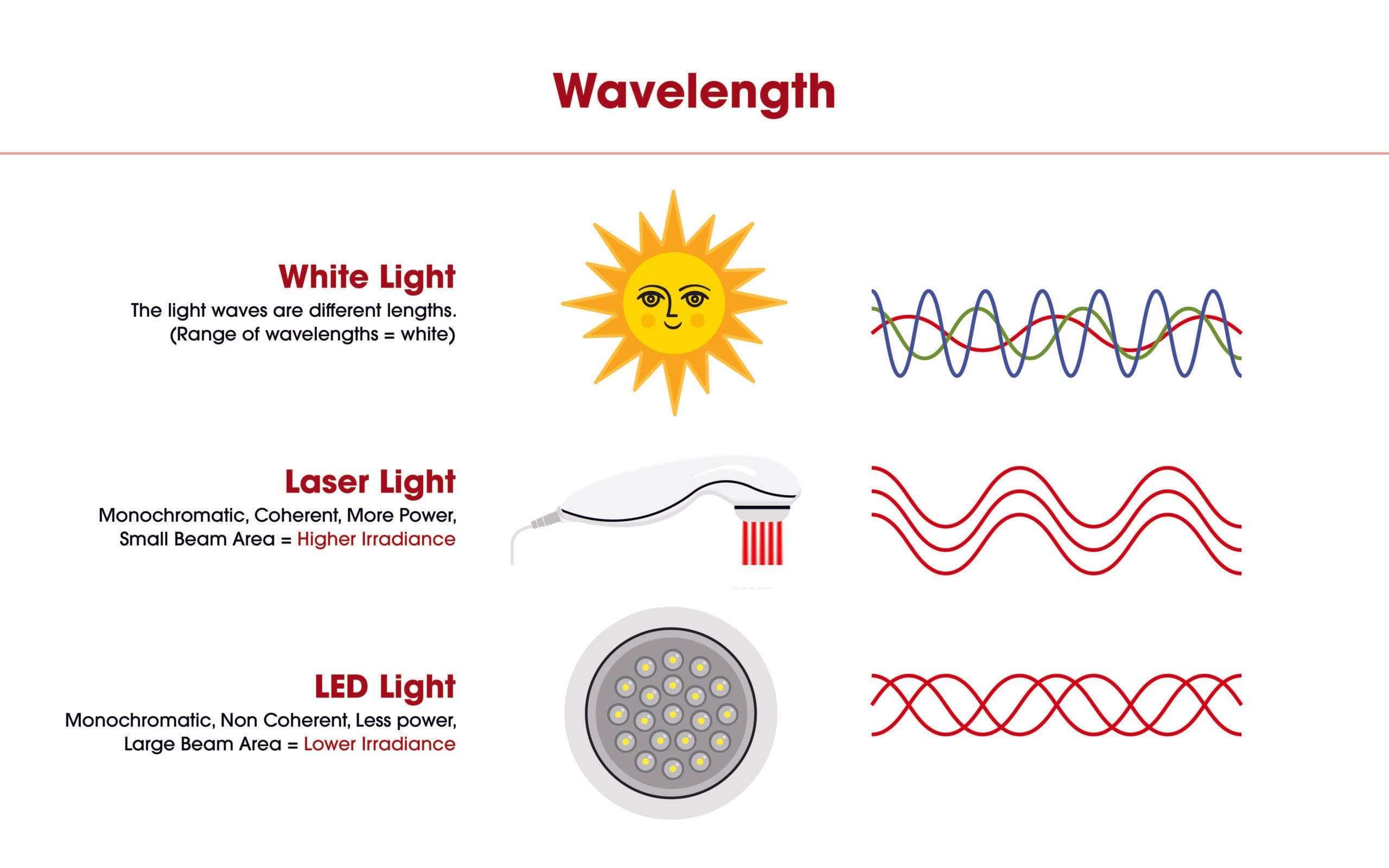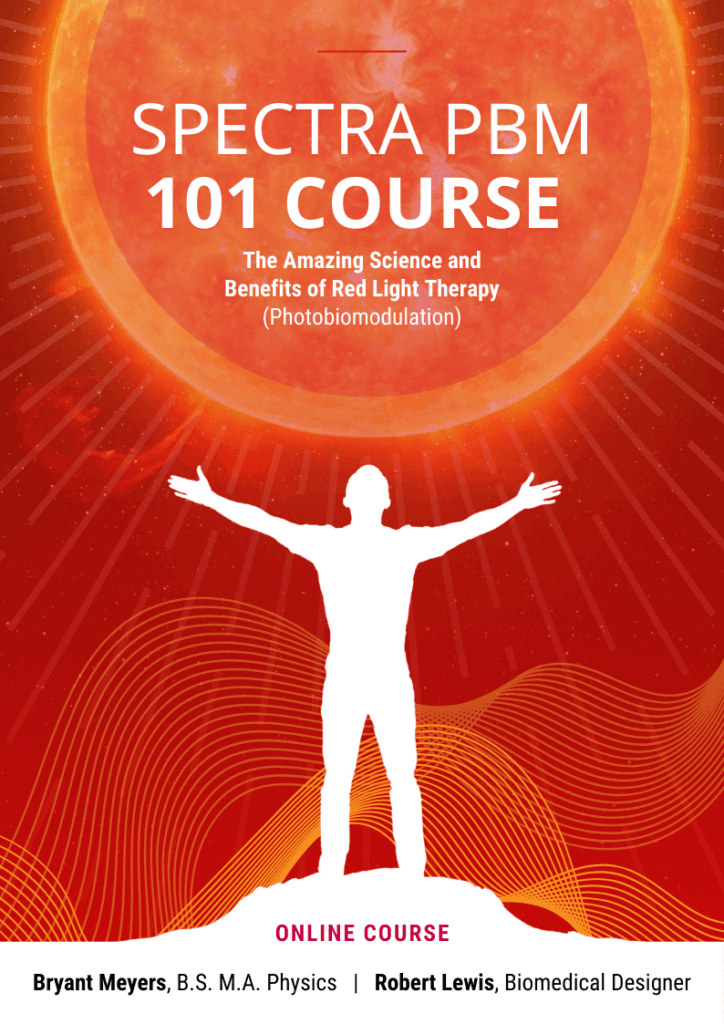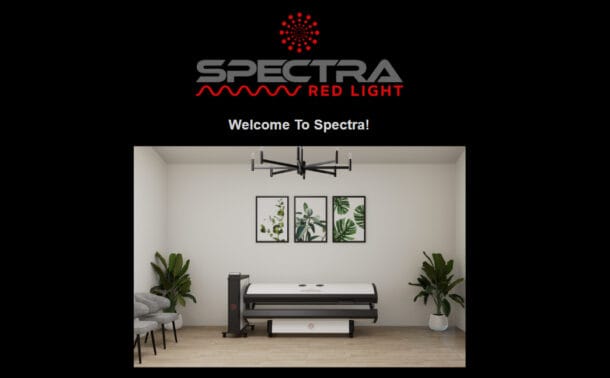According to a 2020 review published in AIMS Biophysics, over 400 clinical trials have investigated the effects of red and near-infrared light on human biology, demonstrating a wide range of benefits from enhanced wound healing to reduced inflammation and improved neurological function (Hamblin, 2020). As interest in Red Light Therapy (RLT) continues to grow across wellness, performance, and clinical settings, understanding the technical parameters that govern its effectiveness becomes increasingly important, none more so than irradiance.
Irradiance, defined as the power of electromagnetic radiation per unit area (expressed in milliwatts per square centimeter, mW/cm²), is a critical determinant of biological response during Red Light Therapy. Whether targeting localized pain or aiming for systemic effects with full-body light beds, the intensity of light delivered to the skin and subcutaneous tissues plays a pivotal role in cellular activation.
The primary mechanism of action behind Red Light Therapy involves the absorption of red and near-infrared photons by mitochondrial chromophores, particularly cytochrome c oxidase (CCO). This photoactivation enhances the mitochondrial electron transport chain, increasing adenosine triphosphate (ATP) production, modulating reactive oxygen species (ROS), and triggering beneficial cell signaling cascades. However, for these processes to be optimally stimulated, the irradiance must fall within a biologically active range, strong enough to penetrate tissue and stimulate cellular respiration, but low enough to avoid overheating or phototoxicity.
Research and clinical consensus have identified a sweet spot for full-body irradiance between 30–40 mW/cm². This range not only mimics the red and near-infrared light intensities found in natural sunlight but also aligns with observed therapeutic windows in photobiomodulation research. When full-body devices are engineered to deliver light within this ideal range, users can expect systemic outcomes such as improved circulation, reduced inflammation, enhanced recovery, and optimized energy metabolism, without the risks associated with overexposure or underdosing.

What Is Irradiance and Why Does It Matter?
When it comes to Red Light Therapy, irradiance is one of the most important yet often misunderstood factors influencing whether the therapy will deliver meaningful physiological benefits. In simple terms, irradiance refers to the intensity of light energy delivered to the surface of the body, measured in milliwatts per square centimeter (mW/cm²). It determines how much photonic energy reaches the skin, and ultimately, how much energy is available to stimulate the cells beneath.
In biological terms, Red Light Therapy works through a process known as photobiomodulation, where specific wavelengths of light are absorbed by cellular components, most notably the enzyme cytochrome c oxidase (CCO) within the mitochondria. When CCO absorbs these photons, it triggers a cascade of biochemical events: increased electron transport chain activity, elevated ATP (adenosine triphosphate) production, and modulation of reactive oxygen species (ROS). These changes enhance cellular metabolism, support tissue repair, reduce inflammation, and optimize systemic energy balance.
But here’s the key: these benefits are dose-dependent. Just as taking too little or too much of a supplement can reduce its effectiveness or cause side effects, the intensity of light exposure must fall within an ideal therapeutic window to stimulate biological activity without causing cellular stress.
This is where ideal full-body irradiance comes into focus. For whole-body red light therapy, where large areas of tissue are being exposed simultaneously, an irradiance in the range of 30–40 mW/cm² has emerged as the clinically preferred standard. This range is high enough to ensure sufficient energy delivery for deep tissue penetration and mitochondrial activation, but not so high that it causes unwanted heating or suppresses cellular function.
Devices with too low irradiance (under 5 mW/cm²) may not deliver enough energy to trigger the mitochondrial response. On the other hand, excessively high irradiance levels (above 50 mW/cm²) can increase the risk of photothermal effects, where heat build-up on the skin surface reduces comfort and may even interfere with optimal cellular signaling.
In the context of full-body use, where uniformity, consistency, and safety are essential, the 30–40 mW/cm² range offers the ideal balance. It replicates the intensity of natural red and near-infrared light found in sunlight and aligns with the range observed in successful clinical studies. Ultimately, choosing a Red Light Therapy device with optimal irradiance ensures that your body receives the right dose of energy, not too little, not too much, but just enough to activate real cellular change. For a deeper understanding of the research, mechanisms, and clinical studies behind Red Light Therapy, visit our Science Page.
The Biologically Active Range: 5–50 mW/cm²
Red Light Therapy exerts its cellular effects through light-induced photochemical reactions within the mitochondria, primarily driven by the absorption of photons by cytochrome c oxidase (CCO). However, for these reactions to take place, the light energy must be delivered at a biologically active intensity. This is where the concept of irradiance becomes crucial.
Scientific research has demonstrated that the effective therapeutic window for irradiance lies between 5–50 mW/cm², with the lower end sufficient for mild cellular stimulation and the upper end approaching thresholds where inhibitory or photothermal effects may occur. Within this range, mitochondrial respiration, ATP production, and downstream regenerative processes are reliably activated, but only if the light dose is balanced appropriately in both power and exposure time.
In a foundational paper titled The Nuts and Bolts of Low-Level Laser (Light) Therapy by Dr. Michael Hamblin, it was noted:
“Serious life-threatening diseases such as stroke, heart attack, spinal cord injury, and traumatic brain injury may soon be amenable to LLLT therapy.” [2]
This underscores the broad biological potential of photobiomodulation across a variety of tissues and organ systems, but only when light is delivered within the right parameters.
Why the Range Matters
If irradiance falls below 5 mW/cm², the energy may be insufficient to generate a meaningful biological response. Cells simply don’t receive enough photonic stimulation to alter metabolic function. On the other hand, if irradiance exceeds 50 mW/cm², especially in full-body applications, the excess intensity may lead to unwanted skin heating, oxidative stress, or even mitochondrial suppression, all of which reduce the intended benefits of the therapy.
This biphasic dose-response phenomenon is well-documented in photobiology. Known as the Arndt-Schulz Law, it reveals that light has a stimulatory effect at low to moderate doses and an inhibitory or even damaging effect at high doses.
In full-body red light beds, this principle is especially important. Unlike small, targeted devices used for joints or localized pain, full-body systems expose large surface areas for longer durations. This requires careful calibration of irradiance to avoid cumulative thermal stress while still delivering enough energy for systemic results.
Mimicking Nature: The Case for 30–40 mW/cm²
Nature often provides the best blueprint for human health, and when it comes to Red Light Therapy, the sun serves as an ideal reference point. Red and near-infrared (NIR) light are abundant in natural sunlight, particularly during sunrise and sunset when the light spectrum shifts toward longer wavelengths. Understanding the intensity of this natural light has helped researchers define optimal irradiance levels for therapeutic applications.
Multiple studies have measured the red and NIR irradiance from sunlight and found it typically falls within the range of 30–40 mW/cm², depending on factors like time of day, season, geographic location, and atmospheric conditions. This range is not only biologically active but also inherently non-damaging, delivering energy deep into the body without excessive heating or phototoxic effects.
A 2016 study by Hart emphasized that the red and NIR component of sunlight reaches intensities of around 23.6 mW/cm² on average, with peaks up to 40 mW/cm². This natural range aligns closely with the ideal full-body irradiance values recommended for Red Light Therapy beds. As such, engineering therapeutic light devices to replicate this range mirrors the evolutionary conditions under which human cells have adapted, enhancing both safety and efficacy.
In a publication titled A New Perspective on Delivery of Red-Near-Infrared Light Therapy for Disorders of the Brain, researchers note:
“Natural sunlight could, therefore, be used as a source of therapeutic red-near-infrared light, but equally its contribution must be considered when assessing and controlling therapeutic dose in patients.” [3]
This statement highlights two critical insights:
- Sunlight itself can deliver therapeutic effects due to its spectral composition and irradiance range.
- The intensity of light exposure matters, and it must be carefully measured and controlled, even in natural environments.

Why Mimicking Nature Makes Sense
Human biology is deeply tuned to the light environment provided by the sun. Red and NIR light penetrate tissue effectively, and their interaction with mitochondrial photoreceptors, particularly cytochrome c oxidase (CCO), is foundational to photobiomodulation. When this light is delivered within the natural 30–40 mW/cm² range, it stimulates ATP production, enhances cellular resilience, reduces oxidative stress, and promotes tissue repair.
By designing Red Light Therapy devices that mimic sunlight in both wavelength and intensity, users benefit from the same gentle yet powerful biological stimulation without the risks of ultraviolet radiation or solar variability. The result is a non-invasive, consistent, and repeatable method of supporting mitochondrial health and systemic wellness, one that feels as natural as standing in the sun, but far more controlled and optimized.
To experience the benefits of Red Light Therapy with clinically optimized full-body irradiance, explore our Spectra Red Light Therapy devices engineered for precision and performance.
Why 30–40 mW/cm² Works Best for Full-Body Therapy
In Red Light Therapy, the therapeutic effect depends not only on the correct wavelength but also on the appropriate intensity of light delivered to the skin and underlying tissues. This is where irradiance, measured in milliwatts per square centimeter (mW/cm²), plays a central role. Clinical and physiological evidence points to the 30–40 mW/cm² range as the ideal sweet spot for full-body Red Light Therapy, providing the perfect balance of energy delivery for systemic results without causing photothermal stress or cellular inhibition.
Optimal Mitochondrial Activation Without Overstimulation
At the base of Red Light Therapy’s effectiveness is photobiomodulation, a process where red and near-infrared photons are absorbed by cytochrome c oxidase (CCO) in the mitochondrial respiratory chain. This photon absorption enhances electron transport, leading to increased synthesis of adenosine triphosphate (ATP), the energy currency of the cell.
Irradiance in the 30–40 mW/cm² range has been shown to deliver sufficient photon density to engage this mitochondrial process, supporting fully:
- Enhanced cellular energy metabolism
- Increased resilience to oxidative stress
- Improved repair of damaged or stressed tissue
- Activation of beneficial transcription factors (e.g., NRF2, NF-κB in modulated form)
Exceeding this range, however, may lead to photoinhibition, where excessive light disrupts mitochondrial function, increases heat accumulation, or even downregulates CCO activity. The 30–40 mW/cm² range provides enough power to activate deep-tissue bioenergetics without crossing into inhibitory territory, especially over large body areas.
Systemic Benefits Require Balanced, Non-Localized Energy Delivery
Full-body Red Light Therapy differs from localized applications in both intention and physiological impact. While targeted use may involve higher irradiance to reach deeper into joints or specific muscle groups, full-body therapy aims to produce system-wide effects—from immune modulation to vascular health and hormonal balance.
The 30–40 mW/cm² range ensures a safe and effective dose across the entire surface area of the body:
- It penetrates into the vascular endothelium, stimulating nitric oxide (NO) release and promoting vasodilation, which improves circulation and tissue oxygenation.
- It activates lymphatic flow and reduces systemic inflammation by modulating pro- and anti-inflammatory cytokines (e.g., lowering TNF-α and IL-6).
- It supports neuroendocrine signaling and hypothalamic-pituitary-adrenal (HPA) axis regulation, which contributes to improved mood, sleep, and stress resilience.
Because these effects are cumulative and involve multiple organ systems, the uniformity and physiological appropriateness of the 30–40 mW/cm² irradiance range are essential for reliable and repeatable outcomes.
Mimicking Sunlight While Avoiding UV Risks
Natural sunlight delivers red and near-infrared light at intensities that typically fall within the 30–40 mW/cm² range. This range is evolutionarily familiar to human biology, and Red Light Therapy devices that emulate these conditions offer a biocompatible method of stimulating cellular health without the risks associated with UV exposure.
By mirroring the natural light environment, devices designed for this irradiance range:
- Achieve deep-tissue penetration without surface overheating
- Support circadian alignment and cellular signaling with minimal physiological stress
- Deliver non-ionizing, non-damaging energy suitable for daily or frequent use
Safety, Comfort, and Efficiency in At-Home or Clinical Use
Beyond its biological benefits, irradiance in the 30–40 mW/cm² range offers practical advantages:
- No skin heating or thermal discomfort during use, even in longer sessions
- Safe for daily exposure, which is ideal for chronic conditions or long-term wellness goals
- Efficient energy delivery without the need for complex cooling mechanisms or session interruptions
These characteristics make this range not only effective but also user-friendly and scalable, whether in clinical environments or home wellness routines.

In full-body Red Light Therapy, the irradiance range of 30–40 mW/cm² is not arbitrary; it is physiologically ideal. It reflects both natural light conditions and decades of clinical research, offering a consistent and biologically appropriate dose that activates mitochondrial function, modulates inflammation, supports vascular and immune health, and enhances whole-body vitality. Devices designed around this range are positioned to deliver the safest and most effective results, staying true to both the science and the rhythms of the human body.
References
[1] Etimad Alattar, Khitam Alwasife, Eqbal Radwan. Effects of treated water with neodymium magnets (NdFeB) on growth characteristics of pepper (Capsicum annuum)[J]. AIMS Biophysics, 2020, 7(4): 267-290. doi: 10.3934/biophy.2020021
[2] Chung H, Dai T, Sharma SK, Huang YY, Carroll JD, Hamblin MR. The nuts and bolts of low-level laser (light) therapy. Ann Biomed Eng. 2012 Feb;40(2):516-33. doi: 10.1007/s10439-011-0454-7. Epub 2011 Nov 2. PMID: 22045511; PMCID: PMC3288797.
[3] Hart NS, Fitzgerald M. A new perspective on delivery of red-near-infrared light therapy for disorders of the brain. Discov Med. 2016 Sep;22(120):147-156. PMID: 27755969.


